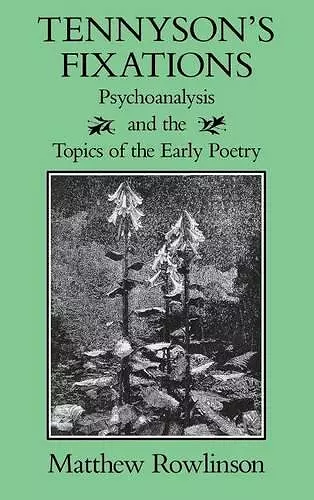Tennyson's Fixations
Psychoanalysis and the Topics of Early Poetry
Format:Hardback
Publisher:University of Virginia Press
Published:7th Feb '94
Currently unavailable, and unfortunately no date known when it will be back

Matthew Rowlinson proposes a revitalized and properly analytic formalism as the appropriate model for a reading of Tennyson. In a series of attentive close readings, he probes the nature of place and the structuring of desire in Tennyson's work. Focusing on the poet's most important early writings - fragments and poems produced between 1824 and 1833 - Rowlinson conflates deconstructive theory with psychoanalytic insights. The author begins by observing that the subjectivities articulated in these poems, from the strangely passive poet-seer of the ""Armageddon"" fragments to the embowered singers of ""Mariana,"" ""The Lady of Shalott,"" and ""The Hesperides"" to the absconding monarch of ""Ulysses,"" are all constituted in relation to ruined, abandoned, or inaccessible places. The placing of the subject allegorizes its relation to the signifier as well as to the discursive structures within which the signifier comes into being. On this premise, Rowlinson takes up Lacan's claim that it is through the signifier that it is through the signifier that all human desire is mediated. In the placement of the subjects he reads a distinctively Tennysonian articulation of desire. Following Paul de Man, Rowlinson demonstrates that allegory comes into being only with a structure of repetition. He has developed a formalist poetics that provides a psychoanalytic account of the most basic figurative and formal devices - allegory, metaphor, rhyme, and metre - and he offers an explication and critique of major concepts in Lacanian and Freudian psychoanalytic theory, including the gaze, the castration complex, the death drive, and the compulsion to repeat. By returning to the deconstruction, the author has resumed the challenges English studies took up in the 1970s and left incomplete in its rush to historicism. His readings offer fresh insights at the level of theory.
ISBN: 9780813914787
Dimensions: unknown
Weight: unknown
224 pages